If Water Storage is a Problem, Damsak is a Solution

When water storage and distribution becomes a problem that needs to be addressed, it can be a timely and costly affair, and after quite a bit of research I finally managed to find a solution that suits me in all its practical aspects as well as sits a bit better in the budget in relation to the more conventional water storage solutions.
When you live in sub Saharan Africa, or any other place where water scarcity and storage is a problem, it is imperative to survival to have enough space to accumulate any water that you might have to spare in the wet seasons. In this case we decided to acquire a Damsak for exactly those reasons.
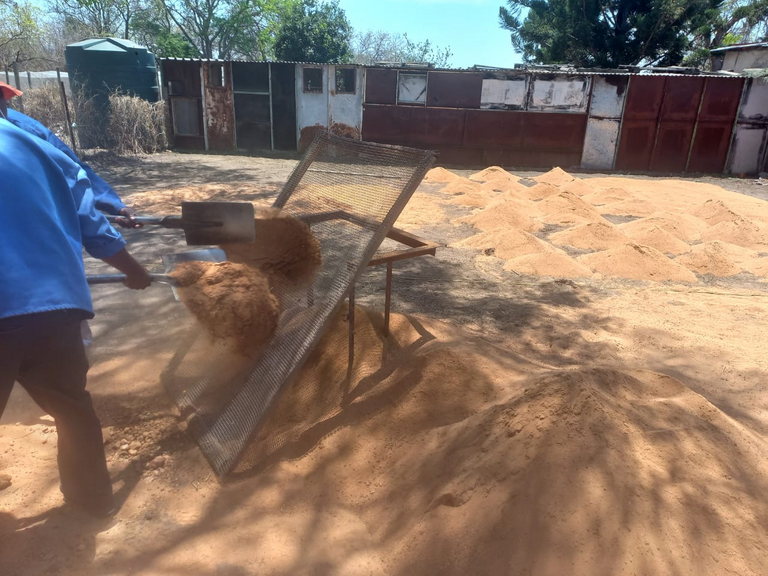
However before we could install the damsak, we had a few hoops to jump in order to get that done. First of all we needed to create an open section where we would let the water bladder stand. So we decided to clear and cut a section back behind the chicken coop (the recycled metal structure you can see in the background of the picture above) This called for us to cut back a mess of overgrowth and weeds strangling through a variety of reusable metal scraps, excess tiles and uncountable miscellaneous items such as old tools and rolls of barbed wire to name a few, lost and forgotten over time. Sadly I was silly enough not to take before pictures for comparison, but this in itself was a huge task for few hands.
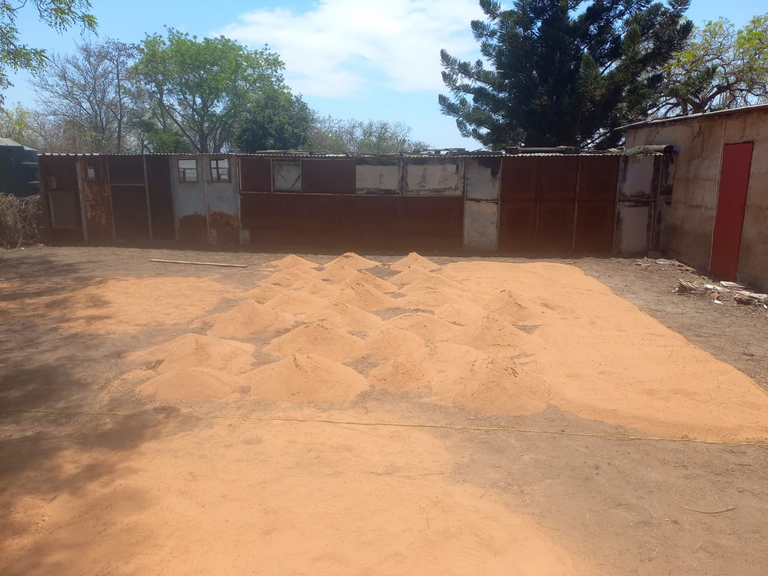
After that we needed to level out the soil roughly then pad and level the measured out section with river sand, which needed to be sifted in order to ensure that no sharp rocks or foreign debris got stuck between the base and the bag.
once the soil was sifted it was placed on piles in a marked off space allocated to the cause. thereafter it was scraped and leveled making use of line levels, then we curbed the lot of it in with some repurposed bricks we had laying around.
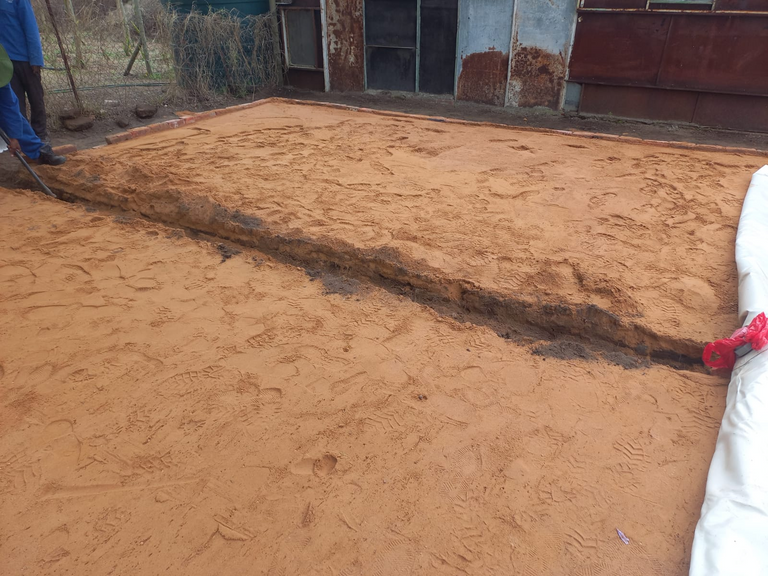
Once all of that was done, and the damsak was laid out in place, we realized that we overlooked one crucial detail... the inlet/outlet connector of the damsak was in fact not on the side of the bag as we had initially assumed, it was actually at the bottom of the bag, this meant that we would have to trench down into our leveled section in order to connect the fittings to the existing water lines. This meant quite a bit of folding and unfolding of the bag to get the placement exactly right without putting any stress on the connectors.
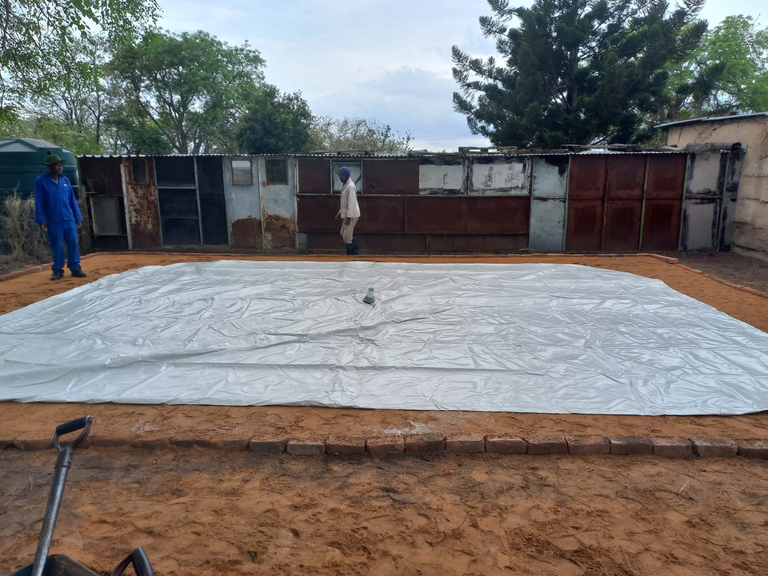
once that was done and our bag was in place, we could finally start filling the bladder, this of course being the most time consuming part as we were only using excess water that was mped from the the water wells, in other words, whenever the primary tanks and current reserve thanks were full, we would pump out just enough to make space for the water that was still being pumped, this left us with no more than 1000L /day that could be pumped into the damsak- and this water bladder has a 40000L capacity.
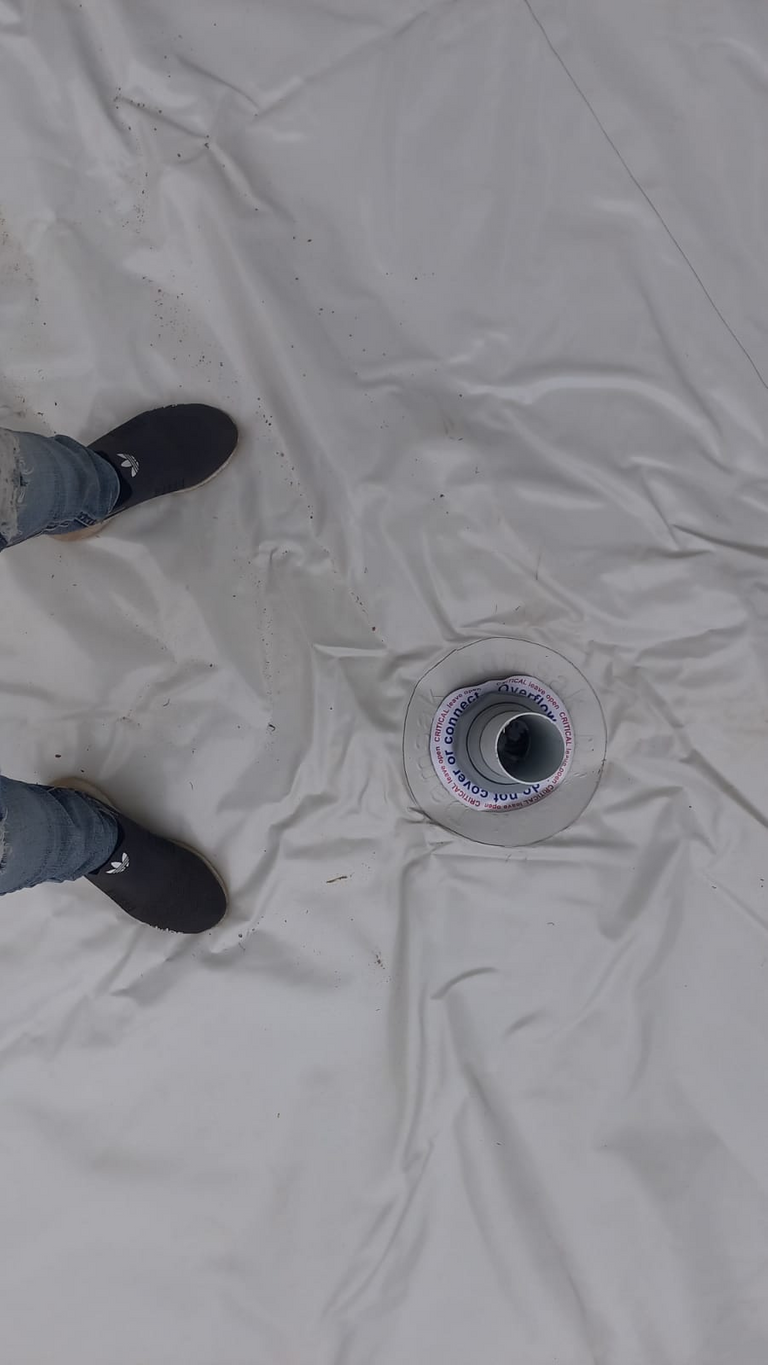
As you can see below, the damsak is starting to fill out nicely, once it is completely full it will stand at 1.8m high. The lovely thing is that the sealed unit discourages any algae or bacterial growth in the water, and at the same time it eliminates water evaporation once in the tank.
So far this process has been one step forward two steps back, as a few consecutive heat waves caused for above average water usage for the household, animals and plants, and as such we needed to make a few withdrawals from our water savings, but hopefully once the rainy season is in full swing, we will be able to get the tank full in no time...
Interesting sizable storage system for water, how will the container last in full sunlight or does it require shadecloth or similar to protect?
Rains may be good right now, it is tomorrow we must worry about in this arid land, many farm dams dried up including large dams it is a massive concern going forward.
Congratulations to you and your helpers, it looks to be a job well done!
@tipu curate
Upvoted 👌 (Mana: 31/91) Liquid rewards.
Good morning :)
Some farmers chose to paint their damsak with a roof paint after a few years just to increase the longevity of the tank, but this tank was designed with Africa in mind, so it can withstand the full extremes of our sun, as long as the tank is not empty, should the tank be under a 1% capacity, it is advised to disconnect fold up and store the bladder until you are ready to fill it again.
Rain is always good,and water is becoming a huge commodity - we will have to start looking after tomorrow today...
Hope you and the family are doing well?
Not finding water underground in a borehole and dam when farming it becomes a constant problem keeping livestock and plants watered, these new tanks are proving to assist.
We have experienced extreme water shortages over the years here on the coast, rains come and people become complacent instead of thinking ahead. Good luck with this 40k litre storage is a fair amount, hopefully rains arrive soon and fill it to capacity!
We are well, thanks for asking, keep to as a normal life as possible, trust all is well there too...
INTERCOMMUNITY - HIVE - AFFILIATE team.
That's pretty neat. In Argentina it is common and in fact more common than not to have a cold water tank on the roofs of the houses, hidden on the upper floor, or hidden in the roof itself. The houses are often built with iron structure columns embedded in concrete and with hollow but structured ceramic bricks filling out the walls. Although in some regions where wood is more plentiful, trunks are used instead.
( link to appease copyright law Image credit )
The cold water tanks are located on top of the structural columns of a house or building. After all these tanks typically weigh multiple tons. Certainly this tank of yours would weigh about 40 metric tons when full. I doubt the typical roof could withstand that. So of course, the ground is where it had to be.
It seems like a very sound investment.
I find it very interesting to learn about the basic infrastructure and how it differs from place to place.
here we have multiple upright tanks connected to the sides of the house in order to collect rain water, an elevated tank for the water wells that gravity feeds to the house and then the overflow tank, that runs from the elevated tank, this feeds into the food gardens as well as the animals - and now the damsak... it might sound like a lot of water to store, but we live in a region with annual rainfall, so we have three wet months the entire year and it is necessary for sustainable living to harvest while we can.
The damsak comes in different sizes that can range between 500L to 200000L, so if one is needed to sit on a roof, I am sure you can find one suited for the job.
Thank you for stopping in and supporting my post. Have a lovely day
200,000 L! A lake in a bag!
Haha pretty much
Congratulations @breezin! You have completed the following achievement on the Hive blockchain and have been rewarded with new badge(s):
Your next target is to reach 61000 upvotes.
You can view your badges on your board and compare yourself to others in the Ranking
If you no longer want to receive notifications, reply to this comment with the word
STOPTo support your work, I also upvoted your post!
Check out the last post from @hivebuzz:
Facinating! Can't wait to see it full @breezin. I also often feel it is one step forward and two back...but in reality it may feel like that I'm sure you are two forward after only one back. And that was having the inlet on the wrong side. Easy mistake
Neither can I - but I think that will take some time
Thank you so much - I think that I needed to hear that. I know that I am moving in the right direction, sometimes, its just hard to see the full picture when you as=re focused on a small section of it :D
Two things I find help. One is photos! You know, like the before and after. That is always encouraging. The second is when people you haven't seen for a while visit. They notice the improvements. Failing that I'll cheer you on! I know how hard it is but we do move forward